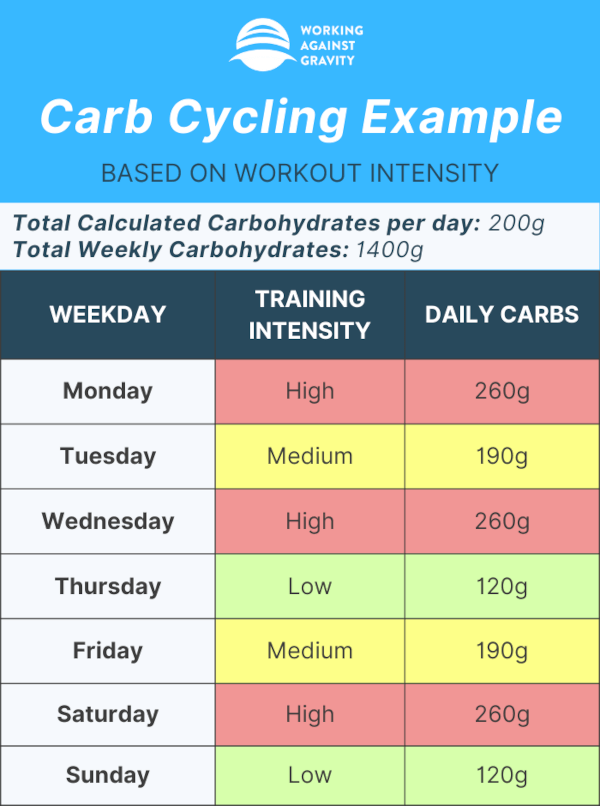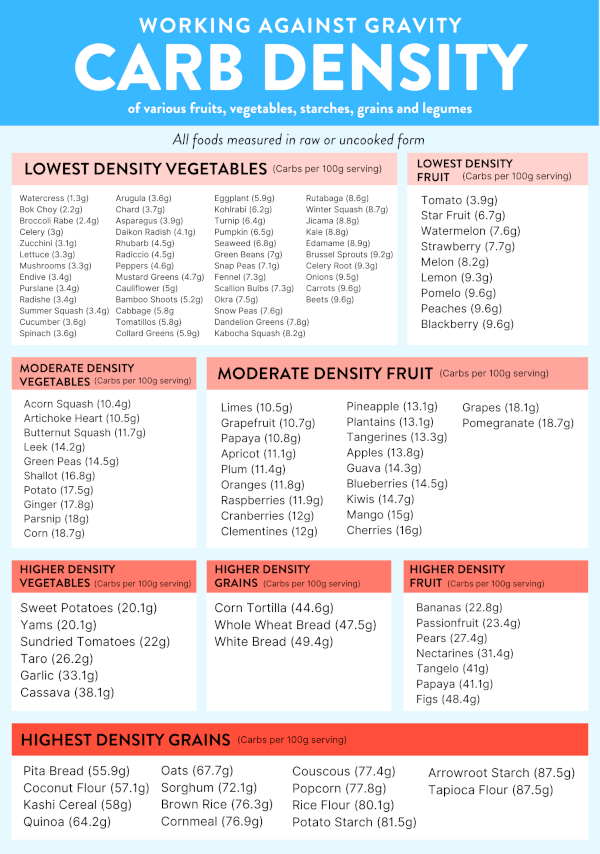If you’ve been in the nutrition or macro world for more than a few minutes, you’ve probably heard the term “carb cycling.” But what is carb cycling, and is it the missing piece of your nutrition plan?
Carb cycling is an advanced fat loss and performance strategy. Because it takes a more precise and nuanced approach, we recommend making sure you have the basics down before giving it a shot and working with a pro to help personalized your needs.
What is Carb Cycling?
Carb cycling is exactly what it sounds like: cycling between different carb amounts daily, weekly, or even monthly. With a carb cycling approach, you eat more carbs when your body is most primed to use them efficiently.
Carb cycling can help you lose fat, improve performance (especially while dieting), or push through a weight loss plateau. It can also help with the mental side effects of a lower-calorie diet, like hunger and feeling deprived. In other words, it can help you stay more consistent with your nutrition plan, leading to faster weight loss.
Who Benefits from Carb Cycling the Most?
Carb cycling is considered a more advanced dieting strategy.
Advertisement
If you’re new to macro tracking, start there—creating consistency in eating the same protein, carb, and fat amounts each day will help you build a baseline knowledge and skillset to move into carb cycling in the future.
That being said, a few people who may benefit from trying a carb cycling approach are:
-
You want to optimize performance as much as possible while in a calorie deficit.
-
You're already lean but want to get even leaner.
-
You enjoy a daily shift from high-carb to low-carb and have a lifestyle that allows for these changes (ex: meal prep time).
Advertisement
-
You've been tracking macros consistently and have hit a weight-loss plateau.
How Many Carbs Do I Need When Carb Cycling?
Start by working with a coach who can help you determine your macros, or use our macro calculator to do it yourself! In the guide, you’ll learn…
-
How to determine baseline calories
-
How to set calories for weight loss, weight maintenance, or weight gain
-
How to determine your macros based on your calories
Advertisement
From there, multiply your daily carb amount by seven to determine how many weekly carbs you need to reach your goals.
An easy introduction to carb cycling is eating your highest carb amounts on your most intense training days. On your less intense days, cut your carbs back. Here’s a quick example:

Helpful note: This could be a difference of 50-100+ carbs daily. Try starting with 25-50% of your calculated daily carb needs on your low-intensity/rest days and 150-175% on your high-intensity days.
You can also practice carb cycling techniques within one 24-hour time period.
Advertisement
On High/Medium Training Intensity Days: Eat your highest-carb meal after your training session.
On Low Training Intensity Days: Spread carbs evenly throughout the day.
This article digs into nutrition timing based on your workout schedule even more!
What Kind of Carbs Should I Eat?
Higher carb days will likely be easy regarding hunger management and food choices. But, when working with a low carbohydrate target, you need to be more intentional with what kind of carbs you eat and when you eat them.
Farther away from workouts and on lower-carb days, stick with whole grains, veggies, fruits, legumes, and starchy tubers like potatoes and sweet potatoes. These high-fiber foods will keep hunger low and blood sugar levels stable. These foods are considered “low density” or “high volume” because you can eat more of them and rack up fewer carbs per gram.
Advertisement
On your higher carb days, aim for foods higher on the glycemic index (or “high density” carbs) right before and after your training session—your body will utilize the quick-digesting carbs to fuel performance and recovery.
The graphic below provides high-density and low-density carb inspiration.
How To Successfully Carb Cycle
If you’re curious about carb cycling, ensure that you fall under one of the bullets in the “Who Benefits the Most” section.
Ask yourself if you’ve nailed down the basic levels of health, like a lifestyle that supports healthy weight and exercise (sleep, stress, hydration, etc.), and consistent calorie intake, before advancing to something more complex like carb cycling.
Advertisement
Then, consider hiring a coach to help you personalize carb cycling to your goals, body, schedule, and training. At WAG Nutrition, our experienced coaches have helped over 30,000 clients individualize their nutrition approach and build the knowledge and habits to sustain results long-term.










